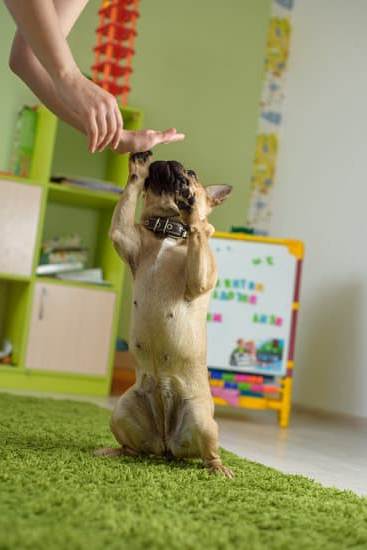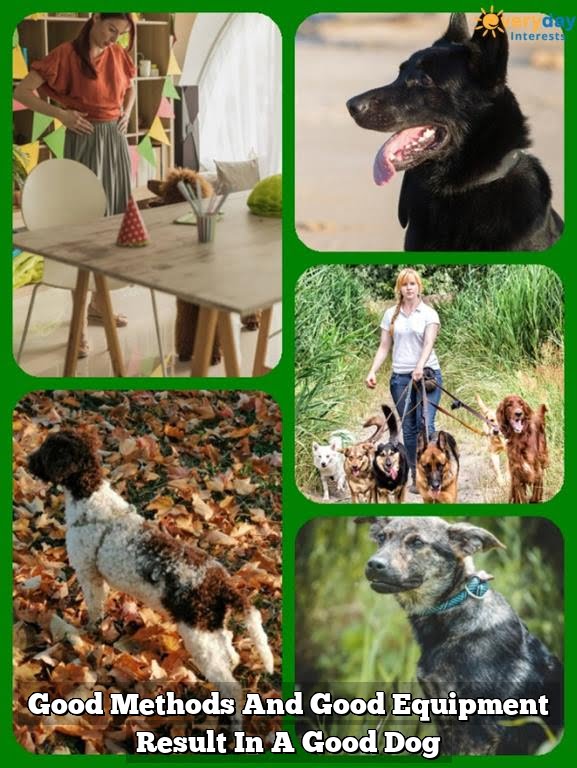Training your dog to have good recall is a crucial aspect of responsible pet ownership. It not only ensures their safety but also strengthens the bond between you and your furry friend. In this guide, we will delve into the ins and outs of recall training, offering tips and techniques to help you achieve success in this area.
Recall training involves teaching your dog to come when called, regardless of distractions or distance. This skill can potentially save your dog’s life by preventing them from getting into dangerous situations. Additionally, having reliable recall allows you to give your dog more freedom during walks and playtime while maintaining control over their actions.
Many dog owners encounter challenges when attempting to improve their dog’s recall. Whether it’s dealing with stubborn behavior or overcoming distractions, understanding these obstacles is the first step towards effective training. By setting clear goals and expectations for your dog’s recall abilities, you can create a solid foundation for success in this essential skill.
Common Challenges Dog Owners Face When Trying to Improve Their Dog’s Recall
Lack of Consistency
One common challenge that dog owners face when trying to improve their dog’s recall is inconsistency in training. It is crucial to be consistent with your training methods, cues, and rewards to ensure that your dog understands what is expected of them. Inconsistency can lead to confusion and mixed signals for your furry friend, making it harder for them to learn and respond appropriately to recall commands.
Distractions and Temptations
Another challenge that many dog owners encounter is dealing with distractions and temptations during recall training. Dogs are naturally curious creatures, which means they can easily get distracted by their surroundings, other animals, or even tasty treats. To overcome this challenge, start recall training in a quiet environment with minimal distractions and gradually increase the level of distraction as your dog improves. Practice in different environments to help your dog focus on you despite potential distractions.
Fear or Lack of Trust
Some dogs may struggle with recall training due to fear or a lack of trust in their owners. If a dog has had negative experiences or lacks confidence in their owner’s ability to keep them safe, they may be hesitant to respond to recall cues.
Building a strong bond based on trust and positive experiences is essential for successful recall training. Be patient, gentle, and consistent in your approach to reassure your dog that coming back when called is a positive and rewarding experience.
Setting Clear Goals and Expectations for Your Dog’s Recall Training
Defining Your Goals
Before embarking on recall training for your dog, it is essential to clearly define your goals and expectations. Decide what level of recall you wish to achieve with your furry friend. Whether you simply want them to come when called in the backyard or off-leash in a busy park, setting specific goals will help guide your training process.
Creating Realistic Expectations
It’s important to remember that every dog is unique and will progress at their own pace. Be realistic about the time and effort required to train your dog effectively. Recall training takes consistency, patience, and dedication. Understand that there may be setbacks along the way, but by staying focused on your goals, you can help your dog improve their recall over time.
Tracking Progress
To ensure you are making strides in training your dog to have good recall, track their progress regularly. Keep a log of training sessions, noting any improvements or areas that may need more work. Celebrate small victories and milestones reached along the way. By consistently monitoring your dog’s recall abilities, you can adjust your training techniques as needed to help them succeed.
Basic Obedience Training Techniques to Establish a Strong Foundation for Recall
Training your dog to have good recall is essential for their safety and your peace of mind. To establish a strong foundation for recall, basic obedience training is key. Here are some techniques you can use to ensure your dog responds reliably when called:
- Start with teaching basic commands like “sit,” “stay,” and “come.” These commands form the building blocks for successful recall training.
- Use positive reinforcement such as treats, praise, or toys to reward your dog for obeying commands. This will make them more eager to respond when called.
- Practice these commands in various environments and distractions to help your dog generalize their obedience skills. This will make them more likely to respond regardless of the situation.
Once your dog has mastered these basic obedience skills, you can then introduce specific recall cues and signals to further enhance their responsiveness:
- Choose a unique recall word or sound that your dog will associate with coming to you. Use this cue consistently during training sessions.
- Practice calling your dog from short distances at first, gradually increasing the distance as they become more reliable in responding to the recall cue.
- Avoid using the recall cue in negative situations, as this can create a negative association with coming when called.
By establishing a strong foundation through basic obedience training and introducing specific recall cues, you will set the stage for successful recall training with your dog. Remember to be patient, consistent, and positive in your approach to effectively train your dog to have good recall.
Introducing Reliable Recall Cues and Signals to Communicate Effectively With Your Dog
One of the essential aspects of training your dog to have good recall is introducing reliable cues and signals that they can understand and respond to consistently. These cues will serve as a means of communication between you and your furry companion, helping them understand what is expected of them when you call them back. Choosing clear and distinct recall cues, such as a specific word or hand signal, is crucial in ensuring that your dog grasps the concept effectively.
When deciding on the recall cues to use with your dog, it is important to consider their training stage, temperament, and learning style. Some dogs may respond better to verbal cues, while others may be more visual and responsive to hand signals.
It is also beneficial to select recall cues that are unique from other commands or everyday language you use with your dog to avoid confusion. Consistency in using these cues during training sessions will reinforce their association with coming back to you promptly.
In addition to verbal and visual cues, incorporating environmental sounds or tools like whistles can also be effective in reinforcing recall behavior. Pairing these auditory signals with treats or rewards when your dog responds correctly will further solidify the association between the cue and the desired action. Remember that patience and repetition are key when teaching your dog new recall cues; consistency in practice will lead to improved responsiveness over time.
| Aspect | Detail |
|---|---|
| Cue Selection | Choose clear and distinct recall cues based on your dog’s preferences |
| Consistency | Use the same recall cues consistently during training sessions for reinforcement |
| Reward System | Pair auditory recall signals with treats or rewards to strengthen positive association |
Implementing Positive Reinforcement and Rewards to Encourage Desired Behavior
Implementing positive reinforcement and rewards is a crucial aspect of training your dog to have good recall. Positive reinforcement involves rewarding your dog for exhibiting the desired behavior, in this case, coming when called. By associating coming when called with something positive like treats, toys, or praise, you are more likely to see improvement in your dog’s recall abilities.
One effective method of implementing positive reinforcement is to use high-value treats that your dog loves. When they respond to your recall cue and come back to you, immediately reward them with a treat and praise. This creates a positive association with obeying the recall command and increases the likelihood that they will repeat the behavior in the future.
Consistency is key when using positive reinforcement in training your dog’s recall. Make sure to reward them every time they come when called, especially during the initial stages of training. Over time, you can gradually reduce the frequency of treats but continue to offer verbal praise and affection as rewards for their good behavior.
It’s important to keep training sessions short and enjoyable for your dog. Training should be a fun and engaging experience for both you and your furry friend.
By making it a positive and rewarding experience, you are not only improving their recall skills but also strengthening the bond between you and your pet. Remember that each dog is different, so be patient and find what motivates and excites your dog during training sessions on how to train your dog to have good recall.
| Positive Reinforcement Tips | Reward Ideas |
|---|---|
| Use high-value treats | Treats, toys, praise |
| Be consistent with rewards | Verbal praise, affection |
| Keep training sessions fun | Short sessions with playtime breaks |
Troubleshooting Tips for Dealing With Setbacks and Obstacles in Recall Training
When training your dog to have good recall, setbacks and obstacles are inevitable. It’s important to approach these challenges with patience and determination to help your furry friend successfully master this essential skill. Here are some troubleshooting tips to guide you through difficult times during recall training:
- Identify the root cause of the setback: Before addressing the issue, it’s crucial to understand why your dog is struggling with recall. Is it due to distractions, lack of motivation, or a misunderstanding of the cue? Once you pinpoint the cause, you can tailor your approach accordingly.
- Modify your training environment: If distractions are hindering your dog’s progress, consider adjusting the training location to a quieter and less stimulating area. Gradually increase the level of distractions as your dog becomes more proficient in responding to recall cues.
- Reinforce basic obedience commands: Sometimes setbacks occur because of a breakdown in foundational obedience skills. Take a step back and reinforce basic commands like “sit,” “stay,” and “come” before progressing with recall training. A strong foundation will support your dog’s ability to succeed in more advanced tasks.
Remember that setbacks are a natural part of the learning process for both you and your dog. Stay positive, stay consistent with your training methods, and don’t be afraid to seek guidance from professional trainers if needed. With perseverance and dedication, you can overcome obstacles in recall training and set your furry companion up for success in all future adventures.
- Celebrate small victories: Recognize and reward incremental progress during training sessions. Whether it’s responding quickly to a recall cue or staying focused amidst distractions, praise your dog for every step in the right direction. Positive reinforcement will strengthen desired behaviors and motivate continued improvement.
- Seek professional assistance: If you’re facing persistent challenges in recall training despite implementing various strategies, consider enlisting the help of a certified dog trainer. An experienced professional can provide personalized guidance, identify specific issues affecting your dog’s responsiveness, and offer tailored solutions to address them effectively.
- Adjust your expectations: Remember that every dog learns at their own pace, so be realistic about the time and effort required for successful recall training. Avoid setting unrealistic goals or becoming discouraged by slow progress. By remaining patient and understanding towards your canine companion, you’ll create a supportive learning environment conducive to achieving long-term recall success.
Consistency and Patience
When it comes to training your dog to have good recall, consistency and patience are essential factors for success. Consistent training helps your dog understand what is expected of them, while patience allows you to work through any challenges or setbacks that may arise during the training process. By maintaining a consistent training schedule and approach, you can help your dog build a strong foundation for reliable recall.
One of the key aspects of consistency in recall training is using the same cues and signals consistently. This helps your dog associate specific commands with certain actions, making it easier for them to understand what is expected when you call them back. Additionally, maintaining consistency in your training sessions by practicing regularly will reinforce positive behaviors and improve your dog’s responsiveness over time.
Patience is also crucial when training your dog to have good recall. Dogs may not always respond immediately or may struggle to understand what you are asking of them. It’s important to remain patient and avoid getting frustrated when things don’t go as planned.
Remember that every dog learns at their own pace, and with time and patience, they will eventually grasp the concept of recall. By staying calm and focused during training sessions, you can create a positive learning environment for your dog and set them up for success in their recall training journey.
Taking Recall Training to the Next Level
To truly master the art of recall training for your dog, it is essential to take your efforts to the next level with advanced techniques and strategies. While basic obedience training lays the foundation, advanced recall training techniques can further enhance your dog’s responsiveness and reliability in any situation. By incorporating these advanced methods into your routine, you can ensure that your dog will come when called even in challenging or distracting environments.
One of the key aspects of advancing your dog’s recall training is to continue reinforcing positive behavior consistently. This means being diligent in rewarding your dog for every successful recall, no matter how small. By maintaining a high level of motivation through treats, praise, or play, you can keep your dog engaged and eager to respond to your cues. Remember that consistency is crucial in building a strong recall response in your furry friend.
Additionally, consider incorporating distance and duration exercises into your recall training sessions. Gradually increasing the distance between you and your dog when calling them back not only improves their obedience but also strengthens the bond between you. Similarly, practicing recalls with longer durations before giving rewards can teach your dog patience and endurance.
By continually challenging and expanding upon their abilities, you can push their recall skills to new heights. Ultimately, by implementing these advanced techniques with dedication and perseverance, you can successfully train your dog to have excellent recall in any situation.
Frequently Asked Questions
How Can I Improve My Dogs Recall?
Improving your dog’s recall involves consistent training, positive reinforcement, and patience. Use high-value treats and praise when they come when called. Practice in different environments to reinforce the behavior.
How Do You Fix a Dog That Ignores the Recall?
If your dog ignores the recall command, it’s important not to scold or punish them as it can make the behavior worse. Instead, go back to basics with training, use higher value rewards, and ensure you have their attention before calling them.
How Long Does It Take for a Dog to Learn Recall?
The time it takes for a dog to learn recall can vary depending on the individual dog’s breed, age, temperament, and previous training experience. On average, with consistent daily training sessions, most dogs can start showing improvement in a few weeks. Continued practice is key to solidifying the behavior over time.

Welcome to the blog! I am a professional dog trainer and have been working with dogs for many years. In this blog, I will be discussing various topics related to dog training, including tips, tricks, and advice. I hope you find this information helpful and informative. Thanks for reading!





